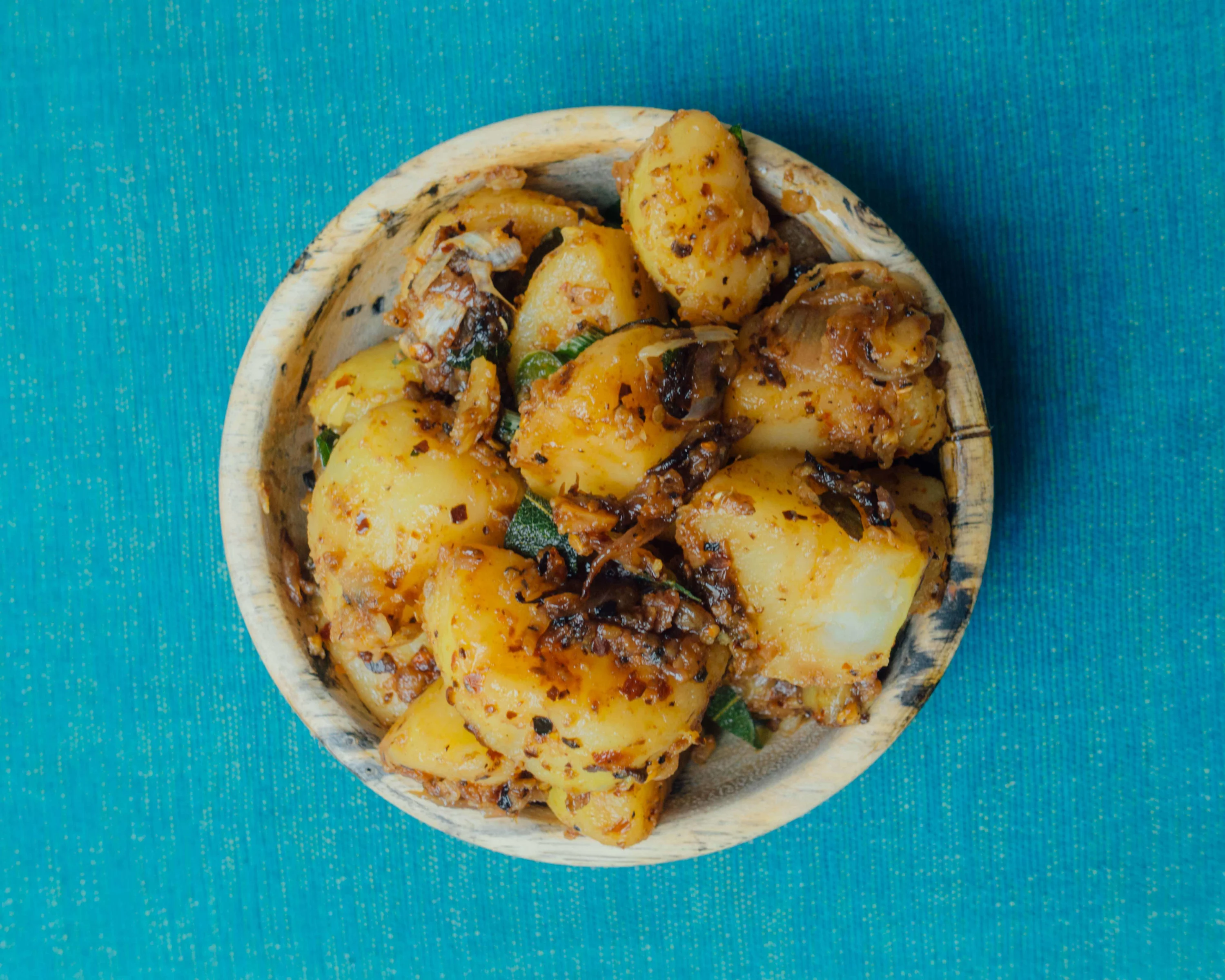
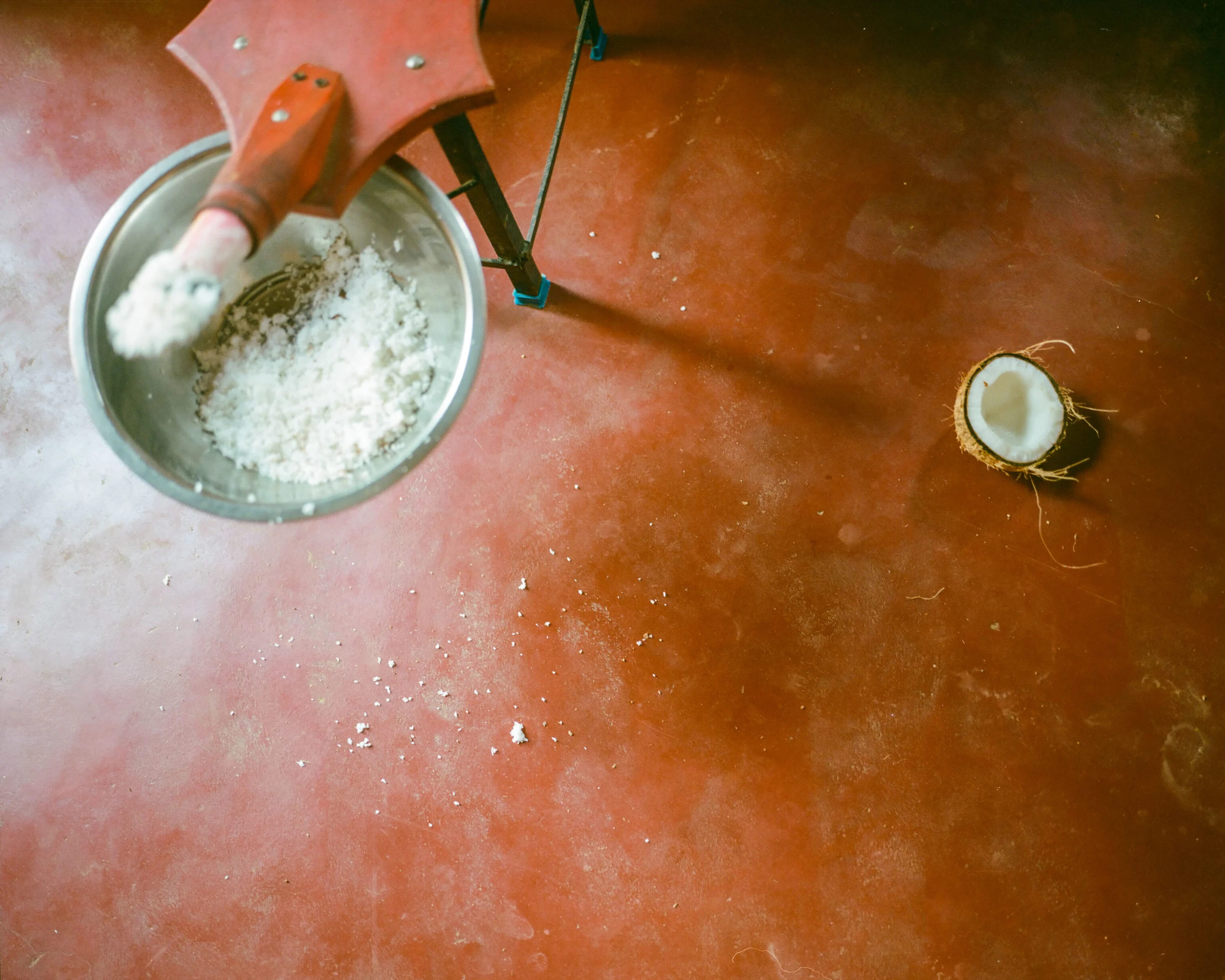
Cynthia Shanmugalingam has had a complicated relationship with Sri Lanka, where her parents are from. Now, as she prepares to open her Sri Lankan restaurant Rambutan in London, she tells Rob Alderson how she picks, chooses and remixes her creative heritage.
Photography by Alex F. Webb.
When Cynthia Shanmugalingam’s parents first moved to the UK from Sri Lanka, they had an unusual way of making friends. “They literally walked up to people in the street and asked if they were Sri Lankan,” Cynthia laughs. “If they were, they'd ask them to come to dinner.”
Her mum and dad settled in Coventry, a small city in the English Midlands. There wasn’t a big Sri Lankan community there in the early 1970s, but her parents used food as a way of building out their lives. “Like a lot of Asian communities, food is a massive part of how they show their love and hospitality,” Cynthia explains. “If you have the fortune to be invited to a Sri Lankan person's house for dinner, then go.”
Now Cynthia is planning to open Rambutan, a Sri Lankan restaurant in London which will pay tribute to her heritage, while not being afraid to reinvent and reimagine dishes as she sees fit. Developing the menu has been an intense process, and unsurprisingly it’s led her to analyze her own relationship with Sri Lanka.
“There was an anxiety in my parents’ generation to assimilate,” Cynthia says. “We didn’t speak Tamil at home. They wanted us to be British, to do well at school, so we did.”
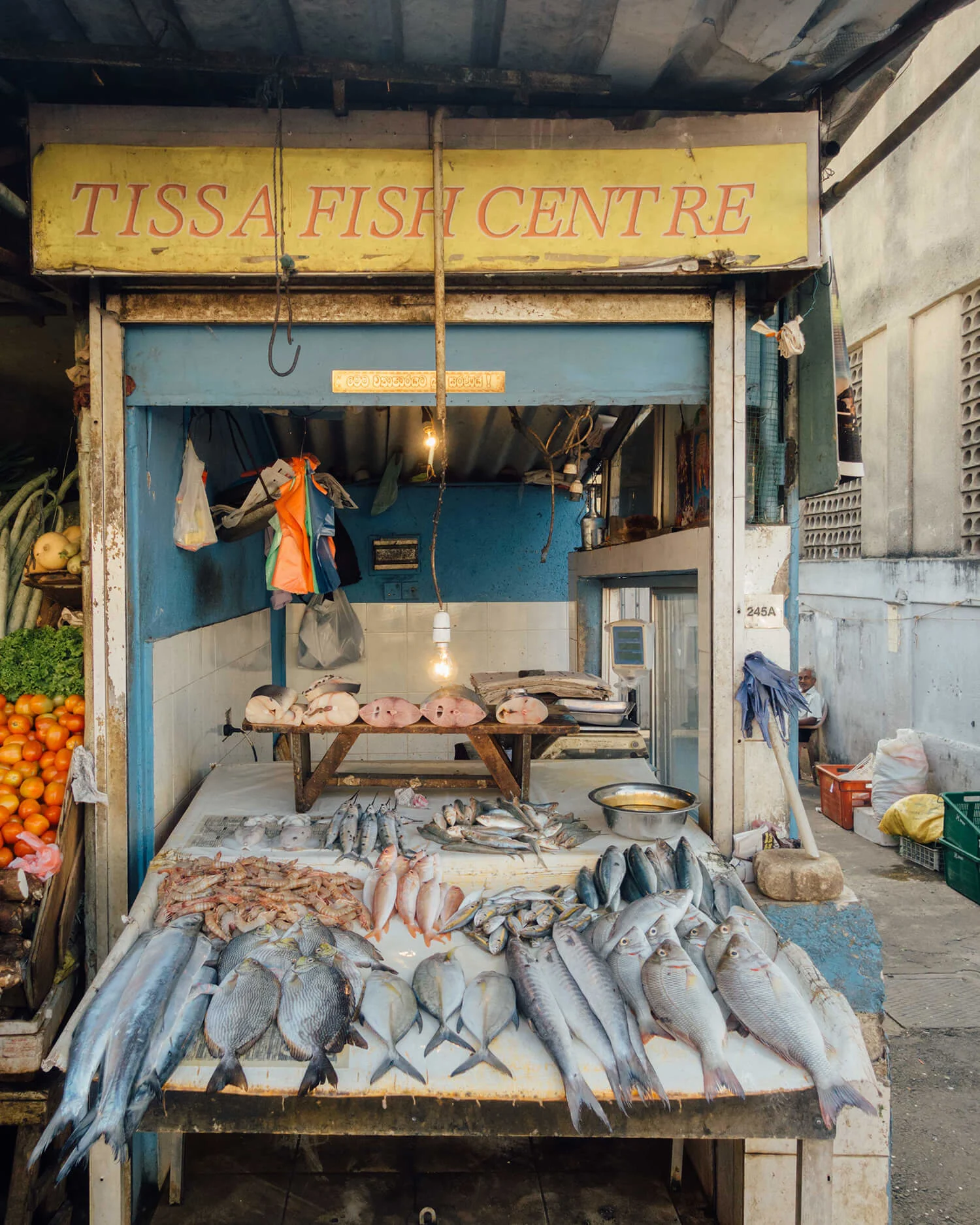

When she went to university in Cambridge, Cynthia liked cooking Sri Lankan food for her friends but didn’t like to feel limited. “I didn't want to just cook Sri Lankan food,” she says. “I wanted to mess up an Ottolenghi recipe like everyone else.”
Her feelings for her parents’ home country were further complicated by the Civil War, which raged from 1983 right up to 2009. Cynthia was used to travelling on her own, but found Sri Lanka difficult because people wanted to pigeonhole her based on her background. At best this was “sort of boring” but at it worst it made her feel unsafe. “I wanted to have a connection to that part of the world, but to do so as independently as possible,” she says.
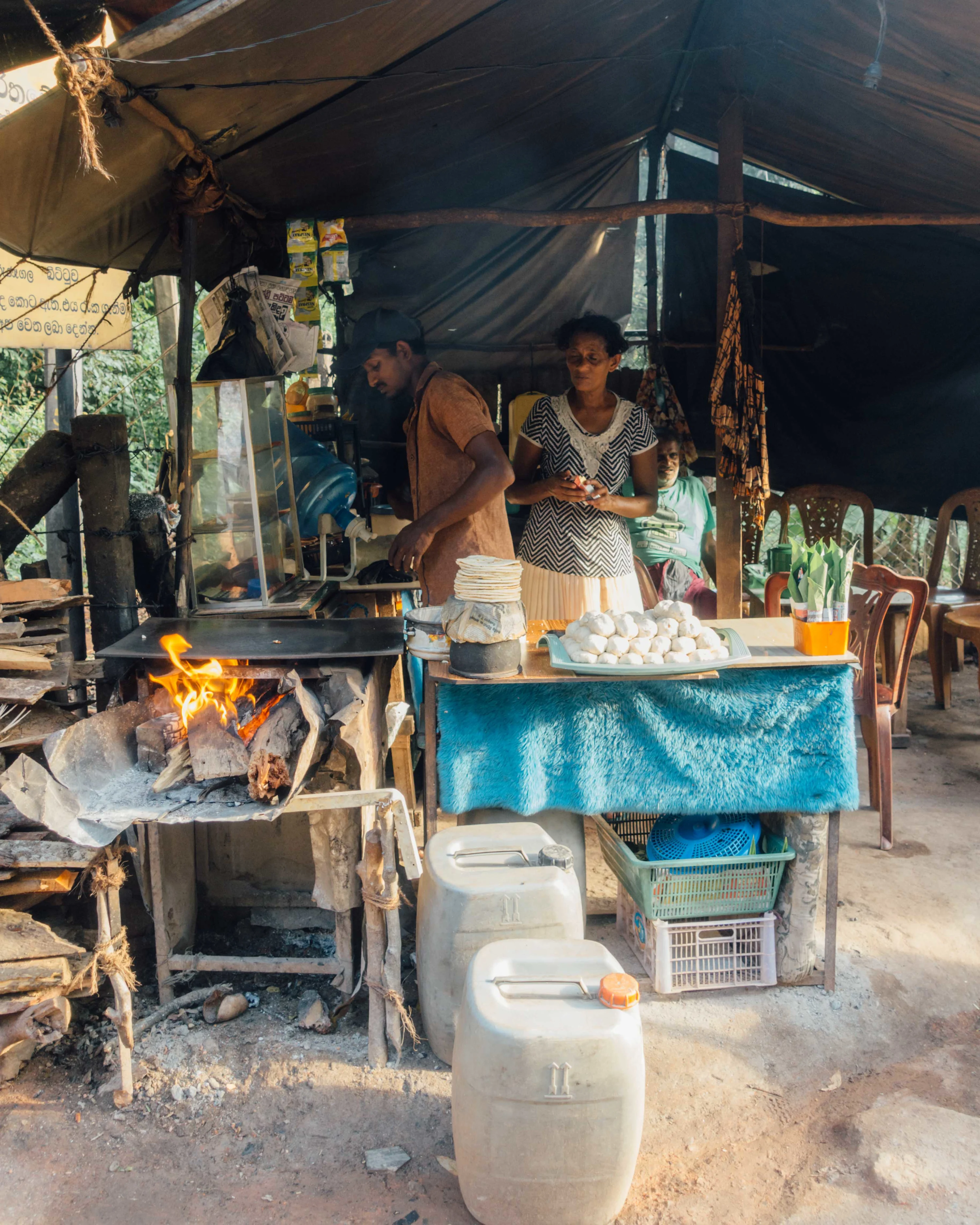
It comes down to what’s delicious, and what’s at the DNA or the heart of the dish.
So she stayed away from Sri Lanka for many years, finally going back after the end of the war when the village her family came from was reopened. Those trips were a revelation, on both a cultural and a culinary level.
“I realized this food is so delicious and so special,” she says. “My dad would say, ‘Can you go to the garden and get some leaves for this dish. Be careful of snakes.’ And I would be like, what? No! I don't know how to be careful of snakes!”
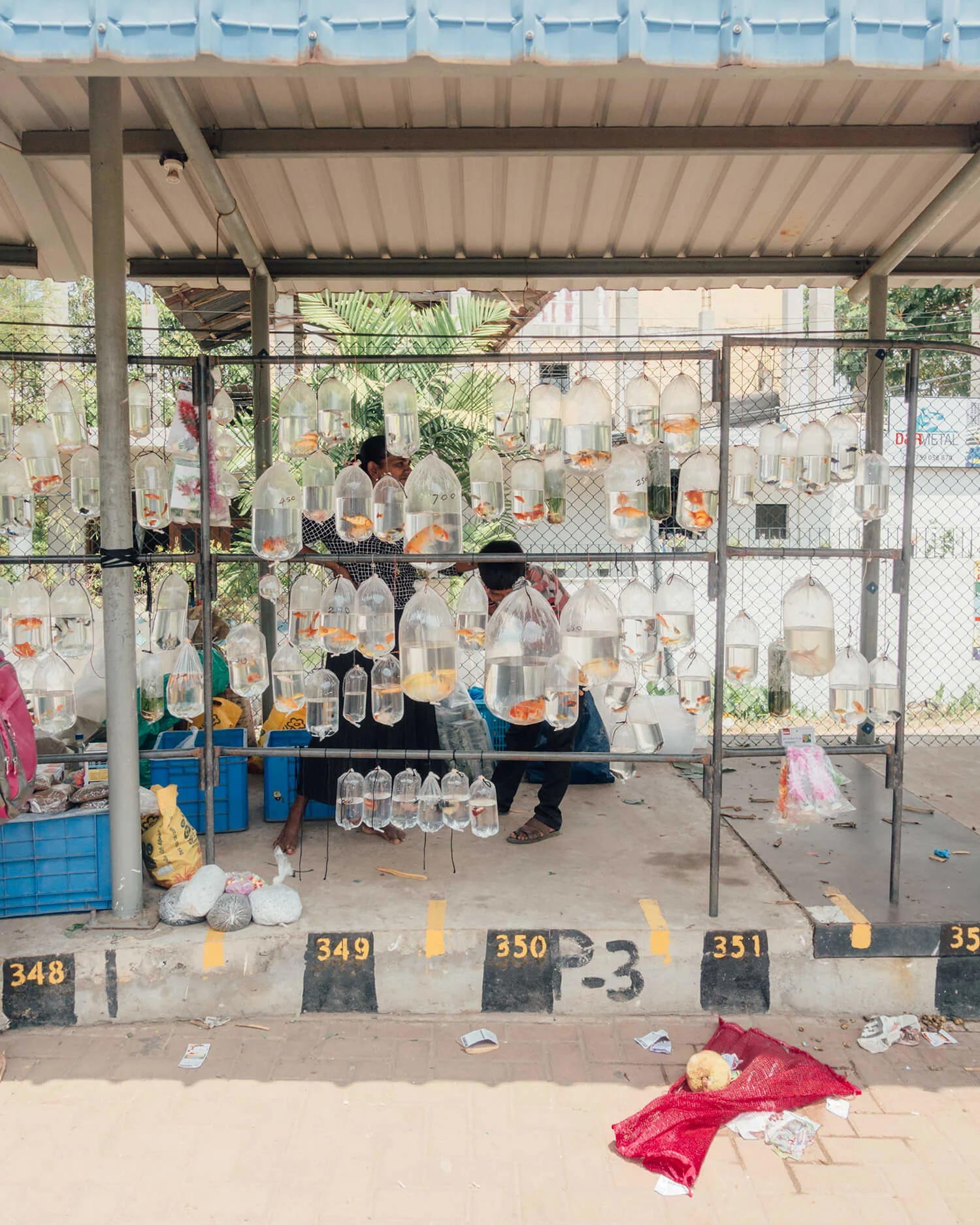

Sri Lankan food, Cynthia explains, is shaped by the country’s “weird, chequered history.” Colonized at different times by the Portuguese, the Dutch and the British, there are also Chinese, Indian and African influences. But unlike in say China, where the eight regional cooking schools stay fairly separate, Sri Lanka became a literal melting pot. “All these influences bled into each other because Sri Lanka is quite small,” Cynthia says.
Coconut and rice are the “twin pillars,” and key flavours include lemongrass, pandan leaf, chilli, cumin and cinnamon, which actually comes from Sri Lanka. There are dhosas and dhals, similar to Indian cooking, and bowl-shaped pancakes called hoppers (which you can make every Sri Lankan you meet misty-eyed just by mentioning).
“Jackfruit is having a trendy moment but Sri Lanka is one of the OG places where that happened,” she says. “And people are surprised by what a Sri Lankan person is prepared to curry. If it moves, we can curry it.”
Cynthia is clear that while some recipes at Rambutan will stay true to authentic Sri Lankan originals, there are things she will change, even, whisper it, improve. She’ll slow cook better quality meat than is available in Sri Lanka for her Chinese rolls and use panko breadcrumbs – unheard of in Sri Lanka – because, “I think the Japanese ended the breadcrumb conversation conclusively.”
The key thing is that she feels inspired, but not limited, by her Sri Lankan roots. “I think anyone can cook anything if you are diligent and curious enough,” she says.
“It comes down to what's delicious, and what’s at the DNA or the heart of the dish.”
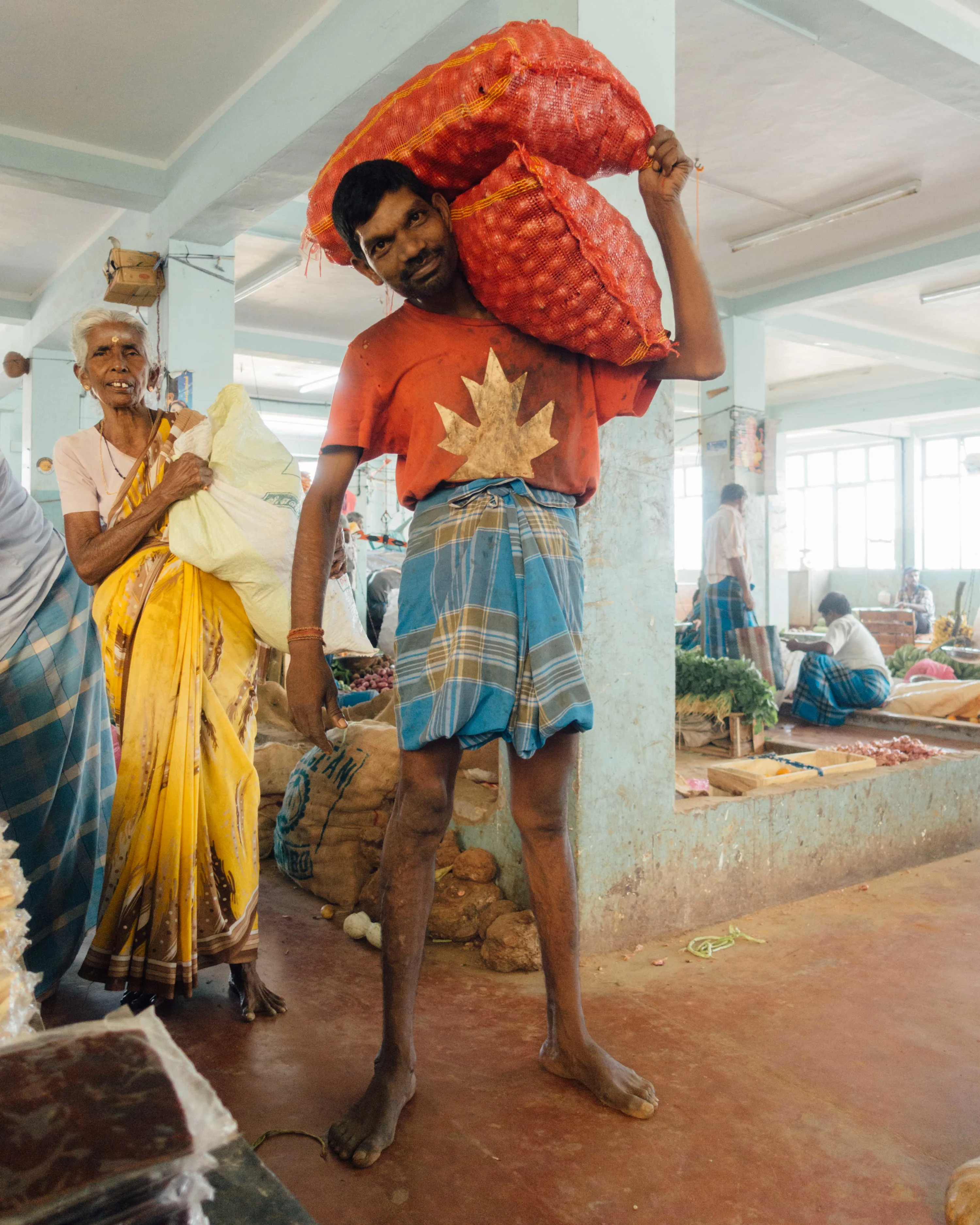

I really feel Sri Lanka is seen as a footnote right now, and I want people to see it in its own right.
She’ll apply this same approach to the restaurant itself. After working for the UK Government, she founded a start-up called Kitchenette which helped people who wanted to open a restaurant make their dream a reality.
This gave her a good overview of all the things that go into a successful restaurant, over and above the food. “It's so improbable an endeavour they ever come off,” she says. “They are mad projects – there's the food and the chefs and the space and the decor and the music and how clean the loos are.”
She is still shortlisting central London sites when we meet, but other things are already in place, like the name. “ I like the way rambutan sounds; it's a fun word to say. It's a hairy lychee that you get all over south east Asia, but you don't get them in India. And that's part of it; this un-Indian thing. I really feel Sri Lanka is seen as a footnote right now, and I want people to see it in its own right.”


For the decor she’s taking influences from the architect Geoffrey Bawa and his tropical modernist style, “brutalist concrete framing lush landscape,” and using Sri Lankan materials where possible. “There is a Sri Lankan palm tree and the wood looks so badass, like leopard print” she says, “We are making a tile out of that to use in different pieces.”
She admits – as she talks me through how treating concrete with titanium oxide gives it a green tinge that you see all across Sri Lanka – that things can get a bit nerdy.
“I am obsessive,” she laughs. “You have to curate the little details but you have to find people who are better at elucidating your ideas than you are. People who can say – you can't have all these things in the same space. You have to pick.”

From the start of making Rambutan a reality, Cynthia’s grappled with how much of her should be a public part of the process. When it came to making this film with director Alex Webb, she sometimes doubted what they were shooting. “I wasn’t sure the personal story was that interesting. This is my Dad. Do people care about that? It was intense. Is this the story of my life?”
Now she seems to have made peace with the fact that, like every creative, she’s an inseparable part of her work. As she puts it at the end of the film, Rambutan is “part Sri Lanka, part London, part me.”
And though she can’t wait to welcome her parents to the restaurant when it opens, she won’t worry too much about what they think. “It's important for us second generation immigrants to feel we can rip up the rule book, even if our mums might not approve.”




